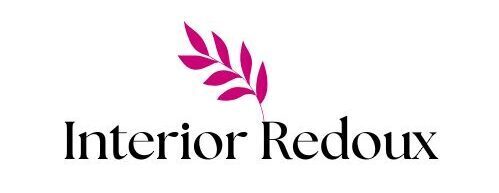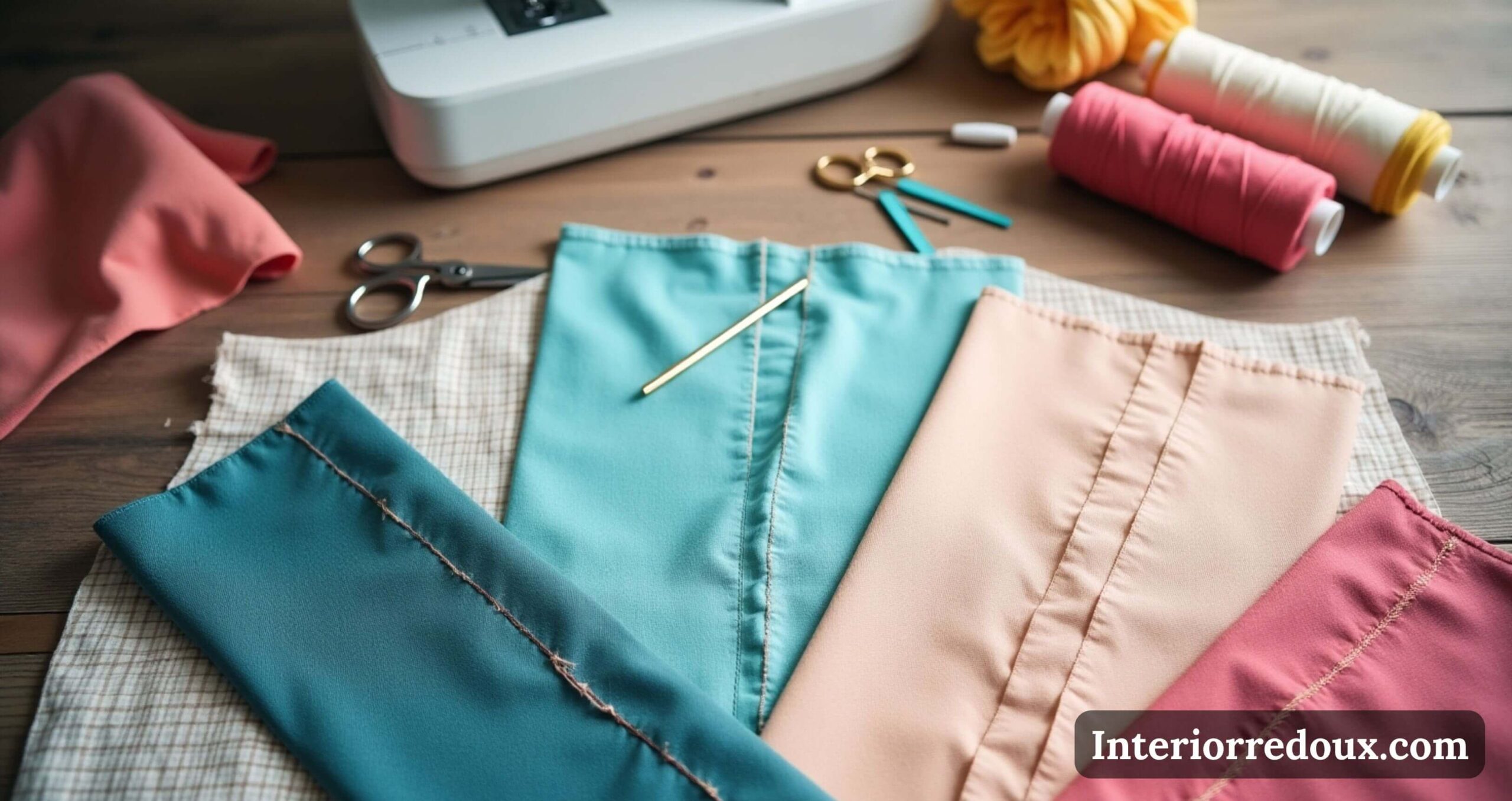Introduction
If you’re diving into the world of sewing, one of the first terms you’ll encounter is “nahttypen,” which is the German word for types of seams. Seams are the backbone of any sewn project—they hold pieces of fabric together and determine not only the look but also the durability and comfort of the finished garment or item.
Understanding different seam types is crucial whether you’re a beginner learning to sew, an experienced hobbyist, or a professional tailor. It’s not just about stitching two fabrics together; the choice of seam affects the final product’s strength, stretch, and even style.
Throughout this guide, we will explore a variety of seam types, from basic to specialized, including how to choose the right one and tips to avoid common mistakes. By the end, you’ll feel confident to pick the perfect seam for any sewing project and improve your craftsmanship dramatically.
Basics of Seams (Nahttypen)
So, what exactly is a seam? In simple terms, a seam is where two or more layers of fabric are joined together by sewing. But seams do much more than just connect fabric pieces; they shape garments, add style, and affect functionality.
The strength and durability of a garment heavily depend on the seam quality. For instance, a poorly sewn seam can come apart easily, while a well-constructed seam can last for years, even with frequent wear and washing. Before we dive deeper into different types of seams or nahttypen, it’s good to understand a few basic sewing terms like seam allowance (the fabric between the edge and the stitching line), notches, and grain of fabric, all of which influence how seams behave and fit.
Knowing these basics helps you recognize why certain seam types work better for specific fabrics or designs. With this foundation, exploring the world of nahttypen becomes much easier and more intuitive.
Common Types of Seams (Nahttypen) Explained
Let’s start with some of the most common seam types that you’ll find in almost every sewing project. It’s created by placing two fabric pieces right sides together and sewing along the edge. It’s great for most lightweight to medium-weight fabrics and is easy to sew, making it ideal for beginners.
The French seam comes next, and it works well with sheer or fragile fabrics. This seam encloses the raw edges, preventing fraying and giving a clean, professional finish inside your garment. Then there’s the flat-felled seam, known for its durability and neat finish on both sides—often seen in jeans and sportswear. The overlocked or serger seam uses a special machine to trim and finish edges in one go, ideal for stretchy or knit fabrics.
Double-stitched seams add extra strength for heavy-duty garments, while bound seams cover raw edges with fabric strips for decorative and functional purposes. Understanding these basic seam types gives you a strong toolkit for most sewing needs.
Specialized Seam Types
Moving beyond the basics, specialized seams offer unique benefits for shaping and design. Princess seams are curved seams used to create a fitted silhouette, especially in dresses and blouses, by following the body’s contours. The welt seam is often used in outerwear or thick fabrics because it adds structure and strength.
It involves sewing two layers with a folded seam allowance that lies flat, which is great for jackets or coats. A lapped seam overlaps two fabric edges and is common in heavy fabrics and upholstery. There’s also the mock flat-felled seam, which looks like the traditional flat-felled seam but is quicker to sew—perfect for casual or denim projects.
Last but not least, topstitching reinforces seams and adds decorative stitching to the seam, giving clothing a polished and fashionable look. These specialized nahttypen help you tailor your sewing to more complex designs or functional requirements.
Tips for Selecting the Best Nahttypen for Your Project
Choosing the right seam type depends on several factors that influence the garment’s appearance, durability, and comfort. First, think about the type of fabric: heavy textiles like denim or canvas need stronger seams like flat-felled or double-stitched seams, while lightweight fabrics like silk or chiffon benefit from seams like the French seam that stop fraying.
Next, think about the garment’s purpose—will it be worn daily and require durability, or is it a delicate piece for special occasions? For sportswear or stretchy garments, seams that accommodate movement, like overlocked seams, are ideal. Also, consider your own sewing skills; some seams are beginner-friendly (plain seams), while others require more experience and precision (princess seams or welt seams). Balancing these factors will help you pick a nahttypen that suits your project perfectly, ensuring both functionality and aesthetic appeal.
Step-by-Step Guide to Sewing Popular Nahttypen
To help you put theory into practice, let’s break down how to sew some of the most popular seam types. Place your fabric pieces right sides together, attach with a pin, and sew using a consistent seam allowance, usually ⅝ inch, to begin with the basic seam.
Press the seam open for a flat finish. For the French seam, start by sewing a narrow seam with wrong sides together, trim the seam allowance, then fold the fabric right sides together and sew again encasing the raw edges. This creates a neat, enclosed seam perfect for delicate fabrics. When sewing a flat-felled seam, sew a plain seam first, trim one side narrow, fold the wider side over the trimmed edge, then topstitch down.
This seam is sturdy and clean on both sides. Using a serger for an overlocked seam trims the edge and encloses it with thread loops simultaneously, which is great for stretch fabrics. Practicing these steps will make sewing various nahttypen easier and more professional-looking.
Common Mistakes to Avoid When Sewing Seams
Even experienced sewists can fall into common traps when working with seams. One frequent mistake is uneven seam allowances, which can cause fitting problems and an untidy appearance. Always measure and mark your seam allowance before sewing.
Another error is not trimming or clipping seams properly, especially on curved seams, which can cause puckering or bulky edges. Ignoring the fabric’s grain or stretch when sewing seams can also lead to warped or uncomfortable garments. For example, sewing against the stretch on knit fabrics can cause seams to pop.
Lastly, skipping seam finishing or choosing the wrong finish can lead to fraying and shorter garment lifespan. To avoid these issues, take your time, use the correct tools, and follow recommended seam finishing techniques like serging, pinking shears, or binding edges.
Tools and Materials to Master Seam Types
The right tools can make all the difference when sewing various seam types. A good quality sewing machine with adjustable stitch length and tension settings is essential, especially for specialized seams. For overlocked seams, a serger machine is invaluable, although not mandatory for all projects.
Basic tools like sharp fabric scissors, pins or clips, and a seam ripper help maintain precision and fix mistakes quickly. Thread choice matters too—use polyester thread for most seams due to its strength and elasticity, but cotton thread can be better for natural fibers.
Needles also vary: universal needles work for most fabrics, but ballpoint needles are ideal for knits, while sharp needles suit woven fabrics. Investing in quality tools and using them correctly ensures your nahttypen are sewn cleanly and last long.
How Seam Types Impact Garment Fit and Comfort
Seams don’t just hold fabric together; they also influence how a garment fits and feels. Seam placement can contour the body or add volume depending on the style. For example, princess seams shape the bust and waist for a flattering fit, while bulky seams can add unwanted stiffness.
The type of seam also affects comfort—flat seams reduce chafing and are preferred in activewear, while raised seams might be stylish but less comfortable for everyday wear. Seam allowance width can influence fit too; larger allowances allow for future alterations but can add bulk if not pressed well. Understanding these nuances helps you tailor garments not only for looks but also for wearer comfort and movement.
Innovations and Modern Trends in Seam Construction
The world of seams continues to evolve with technology and fabric innovations. For technical and outdoor gear, seam sealing is a popular technique where seams are covered with waterproof tape to prevent leaks. This is common in rain jackets and tents.
Another modern innovation is bonded and welded seams, which use heat or adhesives instead of stitching to join fabrics—offering sleek, lightweight, and waterproof finishes, especially in performance sportswear.
Additionally, sustainable sewing practices encourage minimizing waste and using eco-friendly seam finishes that extend garment life. As sewing advances, understanding both traditional and modern nahttypen ensures you can adapt your skills for any fabric or design trend.
FAQs About Nahttypen
What is the strongest seam type?
The flat-felled seam is often considered one of the strongest because it encloses raw edges and is reinforced with topstitching, making it ideal for heavy-duty garments like jeans.
Can I use the same seam for all fabric types?
No, fabric characteristics like weight, stretch, and fray tendency influence which seam type will work best.
How to fix seam puckering?
Ensure proper tension settings on your machine, use the right needle and thread, and sew slowly on tricky fabrics.
Which seam is best for beginners?
The plain seam is perfect for beginners due to its simplicity.
Are seams important for garment durability?
Absolutely. The right seam type and finishing can extend the life of any sewn item by preventing fraying and ensuring strength.
Conclusion
Nahttypen, or seam types, are fundamental to every sewing project. Whether you’re stitching a simple plain seam or a complex princess seam, knowing the options and techniques available empowers you to create garments that look professional, fit well, and last long.
Experimenting with different seams helps you grow as a sewist, improving both your skill and your finished projects. Remember, the right seam for the right fabric and purpose makes all the difference. So next time you pick up your sewing machine, consider which nahttypen will best bring your creation to life!

